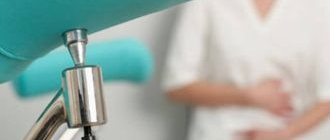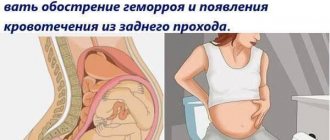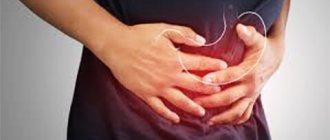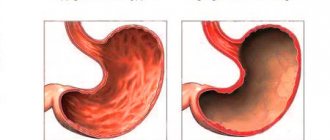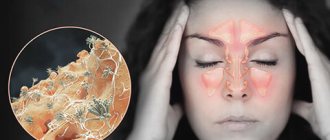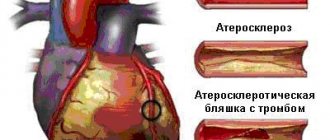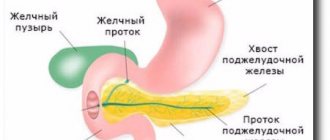General information
Erosion of the mucous membrane of the gastrozone (erosive gastritis) refers to defects of the mucous membrane within the muscular plate, forming in areas of superficial necrosis that heal without a connective tissue scar. The occurrence of a recurrent erosive-ulcerative process in the stomach is based on the predominance of aggressive factors (mainly HCl ) over protective factors of the mucous membrane (cellular regeneration, protective mucous secretion, blood flow, prostaglandin ).
There are acute and chronic gastric erosions. Acute erosions most often develop secondaryly and are a complication of both gastroenterological and other diseases of various organs and systems, while chronic erosions often occur in isolation, acting as a primary pathological process in the gastric mucosa.
Acute ulcerations of the gastric mucosa can occur at any age, and their prevalence (according to endoscopy) varies between 4-20% and 14-22% for chronic gastritis. The increase in detection frequency correlates with age: maximum detection is observed in patients 50-60 years old (75%). More often found in males than in females (ratio 1.5-2.8:1).
Secondary (symptomatic) erosions of the gastric mucosa can occur with arterial hypertension ; liver cirrhosis with portal hypertension; heart defects; IHD complicated by heart failure ; with atherosclerosis of the aorta and its branches, especially its abdominal part; nonspecific chronic lung diseases, with chronic stress, as well as in patients with severe injuries, burns, sepsis , hemorrhagic shock , multisystem organ failure and other critical conditions.
Erosion can form both on a healthy coolant and against the background of existing acute/chronic gastritis, less often on the surface of tumors or polyps. There are different localizations of erosions of the gastric mucosa, but in practice, in the chronic process, the antrum of the stomach (antrum) is much more often affected, causing erosive antral gastritis, while for acute erosions localization in the fundus and body of the stomach is more typical. In the ICD, erosive gastritis is not identified as a separate nosological unit (there is no ICD-10 code for erosive gastritis).
The mucous membrane of the duodenum is often involved in the pathological process, on which surface defects of the mucous membrane also form, forming a clinical picture of gastroduodenitis . In the absence of adequate/timely treatment, erosive and ulcerative lesions of the stomach can form, that is, the pathological process extends beyond the muscular plate (erosive and ulcerative gastritis), causing gastroduodenal bleeding. It is ulcerative lesions of the mucous membrane that underlie almost 60% of bleeding.
Often, with acute erosive gastritis, a hemorrhagic component is morphologically present - foci of hemorrhagic hemorrhages in the gastric mucosa (erosive-hemorrhagic gastritis). In this case, signs of inflammation are minimal.
Histologically, acute erosions are represented by flat polymorphic defects measuring 1-3 mm in the coolant fluid, covered with fibrin/hematin and surrounded by a rim of hyperemia, while chronic erosions are represented by round-shaped polyp-like formations rising above the surface of the coolant fluid with a diameter of up to 5 mm.
Common treatment regimen
There is a standard treatment regimen for erosive gastritis. Depending on individual characteristics, it is adjusted. Some drugs can be replaced with analogues. A common treatment regimen consists of several drugs:
- to eradicate Helicobacter pylori, a combination of Clarithromycin and Amoxicillin is prescribed; if these drugs do not work, Tetracycline and Metronidazole are prescribed;
- Omeprazole or its analogues must be prescribed to reduce acidity;
- antacids are used to protect the mucous membrane from the aggressive effects of acid;
- since the acidity of the stomach decreases, enzymes are needed to speed up the digestion of food;
- for abdominal pain, antispasmodics are prescribed;
- To reduce nausea and flatulence, drugs based on domperidone are needed;
- after acute symptoms are relieved, Iberogast or Trental is prescribed to speed up the recovery of the mucous membrane.
Some medications, such as antacids or antispasmodics, are used only to relieve symptoms. The rest must be drunk continuously for at least a month.
Pathogenesis
The pathogenesis of erosive lesions of the stomach is multifactorial, including acid-peptic aggression, persistence of pathogenic microflora (H. pylori) in the coolant, reflux of bile acids, microcirculation disorders, impaired synthesis of endogenous prostaglandins and toxic-chemical factors.
One of the leading factors in the pathogenesis of the erosive process is infection of the coolant/persistence of Helicobacter pylori, which is confirmed by the effectiveness of anti-NR therapy. H. pylori has the ability to cause alteration of the epithelium of the gastric mucosa, thereby contributing to a decrease in the protective function of the gastric mucosa due to the predominance of the production of immature mucus components. As you know, mucous secretion contains such specific protective components as lysozyme , enzymes , immunoglobulin A , therefore changes in the composition of gastric mucus are one of the most important factors in the transition of an acute erosive process to a chronic one. In addition, cytotoxic strains of HP are capable of inducing an “oxidative explosion,” leading to a sharp production of oxygen free radicals, which can cause inflammation, damage the DNA of epithelial cells, promote the development of coagulative necrosis and destructive changes in the gastric CO.
Violations of microcirculation and, in particular, regional blood flow are essential in the pathogenesis of erosive lesions, which contributes to the development of perivascular sclerosis, cell aggregation and arteriovenous shunting , which leads to increasing microcirculatory disorders and the formation of chronic tissue ischemia, including the mucous membrane. Hypoxia, in turn, is accompanied by activation of the process of lipid peroxidation in the mucosa.
The most important role in the occurrence of erosions is played by disturbances in the motor/evacuation function of the stomach and antroduodenal coordination ( duodenogastric reflux ), which causes a disruption of the remarkable function of the pylorus, thereby contributing to a sharp increase in the content of bile acids in the gastric juice.
An important place in the formation of erosions is given to violations of nonspecific defense factors (decrease in the levels of lysozyme/complement system and phagocytic activity of leukocytes, as well as weakening of cellular / humoral immunity ). The development of erosions is facilitated by disturbances in the synthesis of endogenous prostaglandins , which improve microcirculation, increase mucus secretion and the content of glycoproteins in mucus, and also affect the processes of coolant regeneration.
An erosive defect of the coolant is clearly associated with the use of NSAIDs, which inhibit cyclooxygenase (an isomer of the COX enzyme), which promotes the formation of prostacyclin , which causes a blockade of the synthesis of prostaglandins in the coolant and generally reduces the cytoprotective properties of the mucosa.
Preventive measures
The main prevention of exacerbation of gastritis is a therapeutic diet.
- It is important not to eat fried and spicy foods when you are ill, and to exclude irritating spices, coffee, strong black tea, and soda from your diet. The use of marinades, pickles, smoked and sausage products is prohibited.
- It is recommended to boil or steam dishes. Instead of frying, meatballs and cutlets are steamed. The menu should include porridges made from oatmeal, buckwheat, millet, and semolina. You need to eat often, the food should be warm, not cold.
- To prevent illness, you should not overeat and overload the organic cavity during feasts. Meals should be moderate and fractional - the entire amount of food is eaten in small portions 5-6 times a day. This measure prevents the development of erosion and digestive disorders.
- To improve well-being and strengthen the immune system, the use of folk recipes is allowed. Taking infusions and decoctions of chamomile, angelica, rose hips, and plantain helps improve the condition of the digestive system.
- Of particular importance in preventing the disease is a healthy lifestyle and avoidance of alcohol and smoking. Alcohol and nicotine compounds poison the mucous membrane of the stomach and the entire digestive tract. Smoking and alcohol affect the digestive and other internal organs. Some of the nicotine tars enter the cavity along with saliva and have a direct negative effect on organic tissues. To avoid the development of gastritis, it is necessary to completely avoid cigarettes and alcohol consumption.
- Sports, fitness, and yoga will help improve blood supply to the digestive tract. If sports are not acceptable, simple frequent walks in the park are sufficient. Walking, running, various bends, squats and other elements of health-improving gymnastics improve blood microcirculation in the pelvic organs and promote good digestion. Moderate physical activity has a beneficial effect on the condition of the gastrointestinal tract.
It is always easier to prevent a disease than to recover from it. Chronic and acute gastritis requires the use of various groups of medications. Complex therapy helps eliminate the disease, but fighting it will require a lot of effort and time.
Classification
The classification is based on the following characteristics:
- By type of gastric erosion: acute (2-7 days); chronic erosion (30 days or more).
- By number: single (1-3) and multiple (3 or more).
- According to the localization of erosions: at the fundus of the stomach, in the antrum, in the area of the body of the stomach.
- According to histological characteristics: flat (superficial), full (mature/immature) and hemorrhagic.
- By the nature of occurrence: a self-occurring form (primary) and as a complication of various diseases (secondary).
- According to the phases of the course: acute phase, fibrinous phase; epithelialization phase; phase of clinical and anatomical remission.
- According to the course of the disease: acute - duration (10-60 days) and chronic (from 2 months to several years).
- According to histological structure: superficial (flat), hemorrhagic, complete (immature and mature).
Which pills are better?
Tablets for gastritis differ in the name of the manufacturer and in price. Some patients prefer expensive products, others try to choose cheap analogues. Price and manufacturer don't matter. The main rule of treating a disease is a correctly designed treatment regimen. The drugs must complement each other and mutually enhance their pharmacological properties.
Nuances:
- taking any pills should be agreed with a gastroenterologist;
- if you take the pills incorrectly, you may develop drug-induced gastritis;
- the effectiveness of drug therapy will decrease if additional recommendations are not followed (balanced diet, avoiding stressful situations, giving up bad habits).
Causes
The main reasons for the development of acute/chronic erosive diseases of the stomach include:
- Prolonged psycho-emotional overload/frequent stressful conditions.
- Infection/persistence of the gastric mucosa with the bacterium Helicobacter pylori.
- Increased secretion of hydrochloric acid / reflux of bile from 12 p.c. (duodeno-gastric reflux).
- Nutritional factor (dry food, irregular meals, insufficient chewing of food, consumption of excessively hot and rough foods, hot spices/condiments).
- Concomitant diseases of the gastrointestinal tract and other organs and systems, critical conditions ( burns , severe injuries , sepsis , hemorrhagic shock , systemic organ failure , etc.).
- Tobacco smoking, alcohol abuse.
- Long-term use of non-steroidal anti-inflammatory drugs and antibacterial drugs.
- Working in hazardous industrial conditions.
Goals of drug treatment
The main goal of drug treatment of erosive gastritis is to protect the mucous membrane from the negative effects of hydrochloric acid. This prevents the formation of new erosions and accelerates the healing of existing ones. For effective therapy, medications are selected that would solve the following problems:
- reduced the production of hydrochloric acid;
- reduced increased stomach acidity;
- relieved pain;
- improved the digestion process;
- accelerated the evacuation of stomach contents into the intestines;
- improved blood circulation and tissue regeneration processes;
- accelerated the healing of erosions.
It is also necessary to eliminate the cause of the disease. Most often this is the bacterium Helicobacter pylori. More than 60% of cases of erosive gastritis are associated with it. But the cause may be fungi, parasitic infestations, autoimmune or infectious diseases, liver or kidney dysfunction. If you do not take pills aimed at eliminating these pathologies, you will not be able to cure erosive gastritis.
Before prescribing medications, the doctor must conduct an examination to determine the cause of the disease.
It is recommended to stop taking other medications, supplements and vitamins if possible, as they can also lead to the formation of erosions. Sometimes it is necessary to prescribe sedatives, since gastritis can be caused by stress or strong feelings.
Symptoms
Symptoms of erosive gastritis are determined by the characteristics of defects on the surface of the mucosa and the morphological state of the coolant. The severity of manifestations of gastrozone erosions and the clinical symptom complex as a whole is determined mainly by the type of erosive changes in the coolant and the age of the patients. Thus, in young patients with a predominantly unchanged coolant and the absence of a direct connection with diseases accompanying erosion, clinical manifestations in 30–60% of cases may be scanty and nonspecific or even absent. Most often, patients complain of sour belching, heartburn , and much less often of “hungry” pain of low intensity. Palpation local pain in the epigastric region.
Chronic erosive gastritis is characterized by a more pronounced manifestation of dyspeptic/painful abdominal syndrome. In most patients, heartburn/belching is persistent, often combined with flatulence , and when the duodenum is involved in the pathological process, a feeling of heaviness in the right hypochondrium. Hunger pain in the epigastrium is characteristic of most patients with complete erosion, which can sometimes radiate to the spine.
In young patients with complete erosion, the pain is dull/aching in nature, and in older patients it is predominantly cramping in nature, the intensity of which gradually increases against the background of heaviness in the epigastric region with the addition of nausea and constipation . Symptoms of gastric erosion when taking NPS are manifested by dyspeptic disorders and occasional minor epigastric pain.
Diet for erosive gastritis
Diet table No. 1
- Efficacy: therapeutic effect after 3 weeks
- Terms: 2 months or more
- Cost of products: 1500 - 1600 rubles. in Week
Diet for the stomach
- Efficacy: therapeutic effect after 21-30 days
- Terms: from 3 to 6 months
- Cost of products: 1500-1600 rubles. in Week
Diet for gastric erosion
- Efficacy: therapeutic effect after 21 days
- Terms: 2-3 or more months
- Cost of products: 1600-1800 rubles. in Week
During an exacerbation, when the patient is bothered by pain, heartburn and erosions , nutrition should be gentle. When compiling a diet, you can focus on the diet of Table No. 1a . The point of nutrition is to ensure that all dishes are pureed and eat small portions every 3-4 hours.
Allowed:
- steam omelette;
- soft-boiled eggs (allowed);
- steam souffle of pureed meat/fish;
- well-cooked or mashed porridge, cooked in water or milk;
- cream and butter for dishes;
- honey and sugar;
- boiled fruits and berries;
- fruit and milk jelly, tea with milk.
During this period, the following are excluded: vegetables, snacks, strong meat broths, canned food, smoked meats, sausages, sauces, mushrooms, spices, legumes, corn, millet and pearl barley porridge, alcohol, carbonated drinks, strong tea.
As the patient's condition improves, nutrition is expanded with the transition to Table No. 1 .
The principles of nutrition are the same - frequent meals, small portions, mechanical sparing. We recommend non-fried dietary cereal soups, vegetable puree (zucchini, beets, pumpkin and carrots), well-cooked porridge in a semi-liquid state, mashed potatoes, meat and fish in the form of minced meat dishes, liver and meat pate, unleavened non-acidic cottage cheese and dishes from him (casseroles, cheesecakes cooked in the oven). Baking without a pronounced rough crust is allowed. Berries and fruits can be consumed boiled. Fermented milk products (yogurt, kefir, non-acidic sour cream in dishes) and pasta - coarse thin noodles - are added to the diet. Desserts include jam, honey, marmalade, fruit jelly, natural marshmallows and jam.
Admission rules
For gastritis, drug therapy is carried out comprehensively. The disease must be treated with several drugs with different pharmacological properties. You should not use medications on the advice of friends. The inflammatory process is accompanied not only by general symptoms such as heartburn, belching, nausea and pain, but also differs in the degree of progression and the level of acidity of gastric juice.
Self-medication can cause complications.
When drawing up a treatment regimen, the following factors are taken into account:
- patient's age;
- special instructions (for example, pregnancy, lactation);
- acidity level of gastric juice;
- type of disease and degree of development;
- factors that provoked the disease;
- individual characteristics of the body;
- existing symptoms.
Prevention
- Normalization of work and rest schedules. Rational dietary nutrition.
- If it is necessary to take ulcerogenic drugs, they should be taken only in combination with proton pump inhibitors, antacids or gastroprotectors.
- Timely treatment of concomitant diseases ( coronary disease , hypertension , chronic hepatitis , biliary dyskinesia , cholecystitis , cirrhosis , chronic pancreatitis ).
- Carrying out eradication treatment. During the inter-relapse period, sanatorium-resort treatment using mineral waters of low and medium mineralization is indicated.
- To prevent relapses in the autumn-spring period, carry out anti-relapse treatment for 3 weeks. Antacids and enveloping drugs are prescribed.
- Patients with frequent relapses of the disease (2 or more times a year) require constant monitoring.
Endoscopic examinations should be performed 6 and 12 months after the last relapse.
Considering that acute stress erosions develop after operations, it is important after surgery to correct electrolyte disturbances, normalize the coagulation system and control the pH of gastric contents. At risk are patients with sepsis, burns, shock or central nervous system injury. Such patients should receive preventive treatment (antacids, proton pump inhibitors, alkaline drinking).
Normalization of gastric secretion with medications
Excessive secretion of gastric juice is a disorder that accompanies erosive gastritis. Treatment with drugs includes taking drugs that have antisecretory properties.
H2-histamine receptor blockers are widely used. Patients are often prescribed medications such as Ranitidine and Famotidine. The second group of drugs used for erosive gastritis are proton pump blockers, for example, Omeprazole or Lansoprazole.
Consequences and complications
- Chronic blood loss. Erosive lesions of the mucous membrane are accompanied by bleeding and occupy third place among its causes. Erosive gastritis in 65% of patients is accompanied by chronic blood loss and iron deficiency anemia .
- Acute hemorrhagic gastropathy. Acute bleeding from erosions is caused by various factors. This may be alcohol intake, exposure to uremic toxins, the patient having sepsis , polytrauma , shock , burns or ischemia .
- If Helicobacter pylori infection is not treated in a timely manner, there is a risk of developing mucosal atrophy, which is accompanied by a risk of developing cancer.
Folk remedies
When treating erosive gastritis at home, folk remedies are often used. They should be used as an addition to the main therapy; this is only an auxiliary method. Decoctions or tinctures of herbs and plant juices are used. There are several recipes that quickly alleviate the patient’s condition and speed up recovery:
- sea buckthorn oil heals erosions, relieves inflammation, helps destroy Helicobacter pylori infection;
- propolis tincture 20 drops per glass of milk reduces acidity, improves digestion, normalizes microflora;
- if you have low acidity, you need to drink a glass of water with a dissolved spoon of honey in the morning;
- It is recommended to drink freshly squeezed potato juice half an hour before meals; it relieves inflammation and pain;
- infusion of flax seeds protects the mucous membrane, relieves pain, improves digestion;
- aloe juice mixed with honey heals erosions;
- decoctions of chamomile, St. John's wort, oak bark, mint, birch leaves.
All folk remedies have a general strengthening effect, improve digestion, and ensure that the body receives essential microelements. Many have wound healing, anti-inflammatory and antimicrobial effects. But they can only be used in conjunction with medications.
List of sources
- Nikiforov P. A. et al. Diagnosis and follow-up of chronic erosions of the antrum of the stomach // Kremlin Medicine. Clinical Bulletin. – 2008. – No. 4. – P. 61-64.
- Belova E.V. Characteristics of aggressive-protective factors in erosions of the gastroduodenal mucosa / EB Belova, Ya.M. Vakhrushev // Therapist. archive. 2002. - No. 2- P. 17-20.
- Mosina, L. M. Some pathogenetic mechanisms of erosive and ulcerative lesions of the gastroduodenal zone / L. M. Mosina, L. V. Matveeva, E. A. Mitina // International Journal of Experimental Education. – 2011. – No. 7. – P. 40-42
- Svinitsky, A. S. Stomach erosions: issues of pathogenesis, clinical picture, diagnosis and treatment / A. S. Svinitsky, G. A. Solovyova // Clinical medicine. – 2008. – T. 86, No. 9. – P. 18-24.
- Maev I.V. Chronic gastric erosions: mechanisms of etiopathogenesis and new approaches to treatment // Clinical perspectives of gastroenterology and hepatology. - 2002. - No. 2. - P. 15-20.
Dish recipes
Frozen fruit jelly. Put washed cherries (about 300 g) and cranberries (200 g), add 6-7 tbsp. sugar and add water (liter). Cook for two hours. At this time, dilute the starch in water and gradually add to the jelly. In a few minutes the jelly is ready.- Salmon soup. The tail must be washed and placed in a pan and filled with water. Bring to a boil, skim off the foam and add a peeled onion and a few bay leaves to the broth. Salmon does not take long to cook. While the broth is cooking, peel the potatoes and cut them into large cubes. Carrots also need to be cut into thick slices. Place the tail, discard the onion and bay leaves. Add prepared vegetables, salmon steak and a few peppercorns to the boiling broth and cook until tender, about 20 minutes. The dish is ready and can be served.
